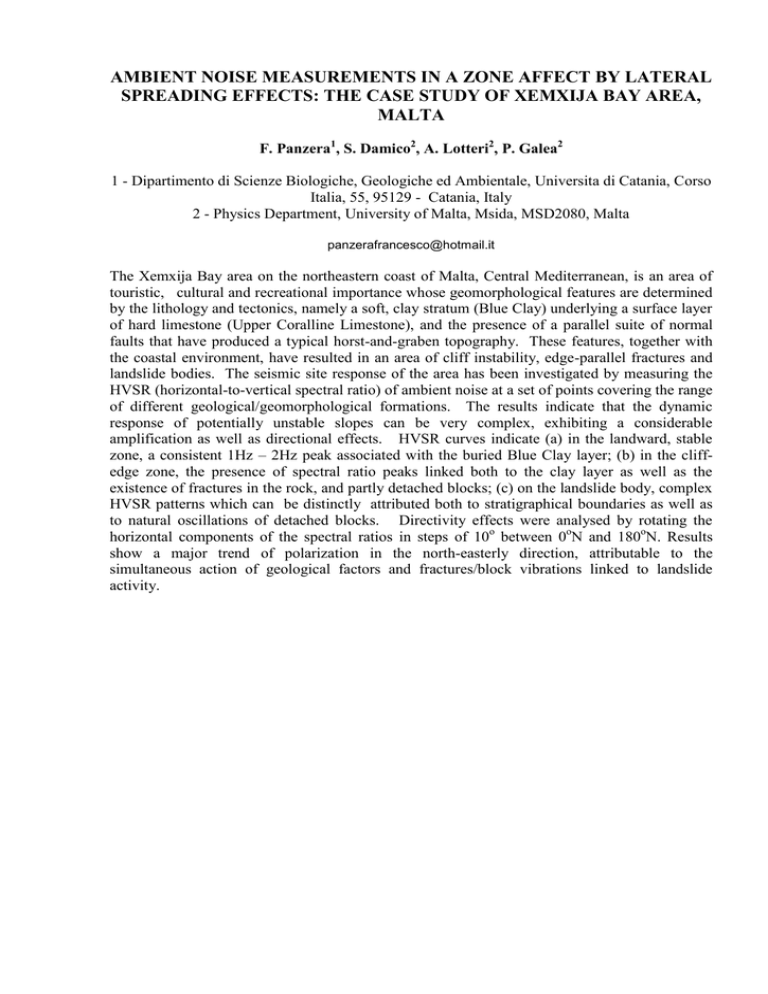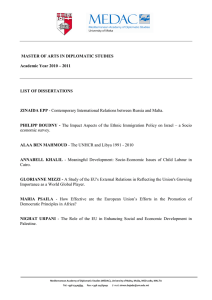AMBIENT NOISE MEASUREMENTS IN A ZONE AFFECT BY LATERAL
advertisement

AMBIENT NOISE MEASUREMENTS IN A ZONE AFFECT BY LATERAL SPREADING EFFECTS: THE CASE STUDY OF XEMXIJA BAY AREA, MALTA F. Panzera1, S. Damico2, A. Lotteri2, P. Galea2 1 - Dipartimento di Scienze Biologiche, Geologiche ed Ambientale, Universitа di Catania, Corso Italia, 55, 95129 - Catania, Italy 2 - Physics Department, University of Malta, Msida, MSD2080, Malta panzerafrancesco@hotmail.it The Xemxija Bay area on the northeastern coast of Malta, Central Mediterranean, is an area of touristic, cultural and recreational importance whose geomorphological features are determined by the lithology and tectonics, namely a soft, clay stratum (Blue Clay) underlying a surface layer of hard limestone (Upper Coralline Limestone), and the presence of a parallel suite of normal faults that have produced a typical horst-and-graben topography. These features, together with the coastal environment, have resulted in an area of cliff instability, edge-parallel fractures and landslide bodies. The seismic site response of the area has been investigated by measuring the HVSR (horizontal-to-vertical spectral ratio) of ambient noise at a set of points covering the range of different geological/geomorphological formations. The results indicate that the dynamic response of potentially unstable slopes can be very complex, exhibiting a considerable amplification as well as directional effects. HVSR curves indicate (a) in the landward, stable zone, a consistent 1Hz – 2Hz peak associated with the buried Blue Clay layer; (b) in the cliffedge zone, the presence of spectral ratio peaks linked both to the clay layer as well as the existence of fractures in the rock, and partly detached blocks; (c) on the landslide body, complex HVSR patterns which can be distinctly attributed both to stratigraphical boundaries as well as to natural oscillations of detached blocks. Directivity effects were analysed by rotating the horizontal components of the spectral ratios in steps of 10o between 0oN and 180oN. Results show a major trend of polarization in the north-easterly direction, attributable to the simultaneous action of geological factors and fractures/block vibrations linked to landslide activity.




